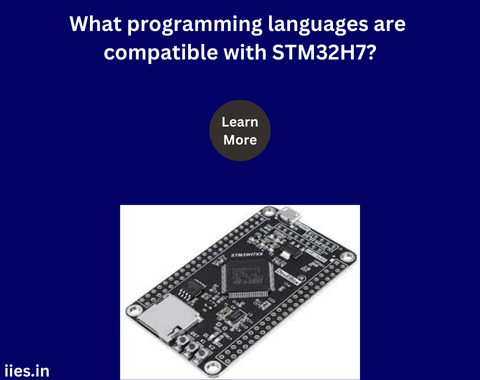
The STM32H7 microcontroller series, developed by STMicroelectronics, is one of the most powerful ARM Cortex-M7 based microcontroller families on the market. Known for its high-performance capabilities, these microcontrollers are widely used in applications requiring real-time processing, high computational power, and advanced peripheral interfaces. To effectively harness the potential of STM32H7 microcontrollers, it is crucial to understand which programming languages are compatible with this hardware. In this article, we will explore the various programming languages that can be used to program STM32H7 microcontrollers, focusing on their respective benefits and use cases.
C and C++ are the most widely used programming languages for embedded systems, including the STM32H7 series. These languages provide a good balance between performance, control over hardware, and ease of use. The main reasons for their popularity in programming STM32H7 include:
Assembly language, while not as commonly used as C/C++, is another option for programming the STM32H7 microcontroller. It provides the highest level of control over the hardware, making it suitable for highly time-sensitive applications where every clock cycle counts. The advantages of using assembly language with STM32H7 include:
However, programming in assembly is more complex and time-consuming, which limits its use to specific scenarios where performance gains outweigh the development effort.
MicroPython is a lean implementation of Python designed for microcontrollers, including the STM32H7 series. While not as fast as C/C++, MicroPython offers several advantages:
MicroPython is particularly useful for educational purposes and for applications where development speed and ease of use are more critical than raw performance.
Rust is an emerging programming language in the embedded systems domain, known for its safety features, especially memory safety, without sacrificing performance. While still gaining traction in embedded development, Rust offers some compelling benefits for STM32H7 programming:
cortex-m and stm32h7xx-hal are being actively developed to support STM32 microcontrollers.Rust is suitable for developers who prioritize safety and are willing to invest in learning a relatively new language in the embedded systems space.
Ada is a programming language designed for high-integrity and safety-critical systems, often used in aerospace, automotive, and industrial control systems. Ada’s features align well with the requirements of STM32H7 microcontrollers in certain applications:
Although Ada is not as mainstream as C or C++, it is worth considering for projects where safety and reliability are non-negotiable.
The STM32H7 microcontroller series is compatible with a variety of programming languages, each offering unique advantages. C and C++ remain the dominant languages due to their balance of performance and control, while assembly provides unmatched efficiency for time-critical tasks. MicroPython offers ease of use and rapid prototyping, making it ideal for less performance-sensitive applications. Rust and Ada, though less common, provide modern safety features that can be invaluable in specific scenarios.
Indian Institute of Embedded Systems – IIES